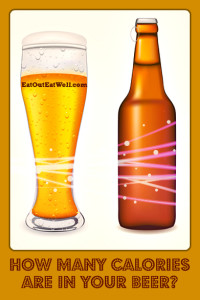Free e-book from Amazon on Sunday August 4th and Monday August 5th!
It’s August and time to have warm weather fun. Here’s some help!
How do you like your coffee? Black, light and sweet, regular? Do you stand in front of the sugar and milk adding and pouring until the color and taste are just right?
There are about two calories in eight ounces of unsweetened black brewed coffee – doesn’t matter if it’s hot or iced. Not a bad deal.
What a lot of us don’t think about is how many calories are in the stuff we put into our coffee.
Half and half, 2 tablespoons (1/8 cup): 40 calories
Whole milk, 2 tablespoons: 18 calories
2% (low fat) milk, 2 tablespoons: 14 calories
Non-fat milk, 2 tablespoons: 11 calories
Sugar, 1 teaspoon: 16 calories
How much milk or half and half do you put into your coffee? We all do a freehand pour. Try measuring how much you pour and you might be surprised.
How much sugar do you add?
How many times a day do you drink coffee?
Say you have 3 grande (Starbuck’s) – or 3 large (Dunkin donuts) – size coffees a day. Each is 20 ounces or 2.5 times the size of a traditional 8 ounce cup.
If you add 4 tablespoons of half and half and three teaspoons of sugar to each that’s:
▪ 128 calories for the additives and around 5 calories for the coffee for a total of 133 calories for each grande/large cup of coffee.
▪ Have three of those and that’s 399 calories a day of coffee your way.
▪ Do that every day for a year and that’s the equivalent of 145,635 calories, around 41.61 pounds of body fat. Not everyone drinks that amount of coffee with that amount of half and half and sugar. But, weight management is a balancing act: If you eat more calories than you burn, you gain weight. Because 3,500 calories equals about 1 pound (0.45 kilogram) of fat, you need to burn 3,500 calories more than you take in to lose one pound. The equation isn’t totally clear-cut because you usually lose a combination of fat, lean tissue, and water. As weight loss changes take place in your body you might need to decrease your calorie intake even more to continue to lose weight.
But, bottom line, it does make you stop and think about how many calories you really are putting into your coffee – or where your (around the middle) muffin top is coming from.
 Have you ever noticed that alcohol doesn’t fill you up the way food does? Here’s why: it doesn’t register as “food” in your GI tract or your brain.
Have you ever noticed that alcohol doesn’t fill you up the way food does? Here’s why: it doesn’t register as “food” in your GI tract or your brain.
The bad news: it doesn’t fill you up but it does have calories — 7 calories a gram – more than carbs and protein which have 4 calories a gram and fat which has 9. So, even thought it doesn’t feel as though you’re putting calories into your body, you can drink a lot of calories and still not feel stuffed (perhaps drunk, but not stuffed).
A standard drink is equal to 14.0 grams (0.6 ounces) of pure alcohol, the amount usually found in 12 fluid ounces of beer. The serving size of malt liquor, or beer with high alcohol content, is 8-9 fluid ounces.
There is huge variation between brands and types of beer, but on average:
Different types of beer and malt liquor can have very different amounts of alcohol content. Light beers can almost as much alcohol as regular beer – about 85% as much. Put another way, on average:
Analyze your beer choice. Since there’s a very wide variation in the calories in beer, can you be satisfied with one of the lower calorie brews?